Writing Queries in C# LINQ
Query Syntax:
Let’s look at the generic syntax:
select iterator;
Here:
- The Data_Source can be the list that holds the data.
- The iterator is used to fetch the elements from the Data_Source.
Data Source
In this entire guide, we will use the following list of records as a data source and all the queries are applied on this data source only. Make sure that you run this code in your environment and modify the query statements with the following examples one by one which we are going to discuss:
using System.Collections.Generic;
using System.Linq;
using System.Collections;
public class Calculations
{
public static void Main()
{
// List creation
List country_prices = new List(){
// Add 5 records into List
new Prices() { item = "Fruits",location = "USA", quantity = 100, cost = 345.78},
new Prices() { item = "Nuts",location = "India", quantity = 200, cost = 3645.78},
new Prices() { item = "Others",location = "UK", quantity = 500, cost = 90.68},
new Prices() { item = "oil",location = "USA", quantity = 100, cost = 345.78},
new Prices() { item = "Chillies",location = "USA", quantity = 10, cost = 67.89},
};
foreach(var i in country_prices)
{
Console.WriteLine(i.item + " " +i.location + " "+i.quantity + " "+ i.cost);
}
}
}
public class Prices {
public string item {get;set;}
public string location {get;set;}
public int quantity {get;set;}
public double cost {get;set;}
}
Records:
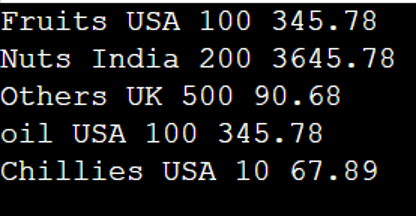
Explanation:
1. Create the prices with the following attributes:
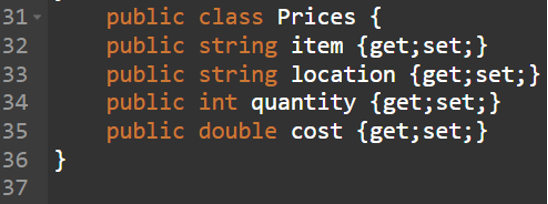
2. Create another class which is “Calculations” with main method and create the country_prices list with five records.

Select
Basically, “select” is a projection operator which selects the attributes from the specified data source. The query starts with “from”. Then, we specify the iterator that iterates over the data source. Then, the “select” operator is specified.
Syntax:
All Attributes: from iterator in Data_Source select iterator;
Specific Attribute: from iterator in Data_Source select iterator.attribute;
Example 1:
Let’s write a query to select all the records from the list.
using System.Collections.Generic;
using System.Linq;
using System.Collections;
public class Calculations
{
public static void Main()
{
// List creation
List country_prices = new List(){
// Add 5 records into List
new Prices() { item = "Fruits",location = "USA", quantity = 100, cost = 345.78},
new Prices() { item = "Nuts",location = "India", quantity = 200, cost = 3645.78},
new Prices() { item = "Others",location = "UK", quantity = 500, cost = 90.68},
new Prices() { item = "oil",location = "USA", quantity = 100, cost = 345.78},
new Prices() { item = "Chillies",location = "USA", quantity = 10, cost = 67.89},
};
//select operator in the query
var data = from i in country_prices
select i;
foreach(var i in data)
{
Console.WriteLine(i.item + " " +i.location + " "+i.quantity + " "+ i.cost);
}
}
}
public class Prices {
public string item {get;set;}
public string location {get;set;}
public int quantity {get;set;}
public double cost {get;set;}
}
Output:
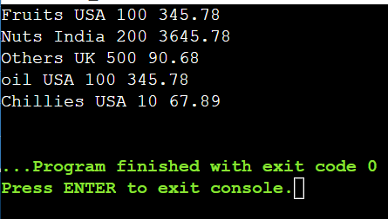
Here, we didn’t specify any attribute in the “select” query. We fetched all the attributes from the query (data) inside the “foreach” loop using the iterator.

Example 2:
Now, get the items by specifying the item attribute within the “select” operator. The query is “from i in country_prices select i.item”.
var data = from i in country_prices
select i.item;
foreach(var i in data)
{
Console.WriteLine(i);
}
Output:
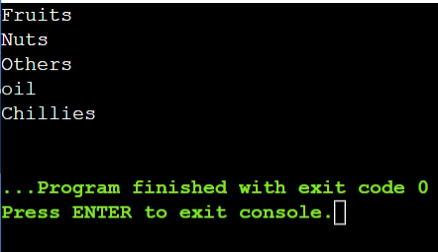
Line # 21 – Line # 29:

2. Where
If you want to filter the data based on some conditions/s, you can use the “where” operator in the query along with the “select” clause. But the “where” operator is used first and then the select operator is specified.
Syntax:
Let’s see how to use the “where” operator inside the LINQ query.
where condition/s
select iterator.attribute;
Example 1: Single Condition
Let’s filter the records based on the item attribute. Use the equal to (==) operator in the “where” operator as a condition and compare the iterator with “Chillies”. So, the records that are related to “Chillies” are selected.
The query is “from i in country_prices
where i.item == “Chillies”
select i”
var data = from i in country_prices
where i.item == "Chillies"
select i;
foreach(var i in data)
{
Console.WriteLine(i.item + " " +i.location + " "+i.quantity + " "+ i.cost);
}
Output:
There is only one record with the “Chillies” item.
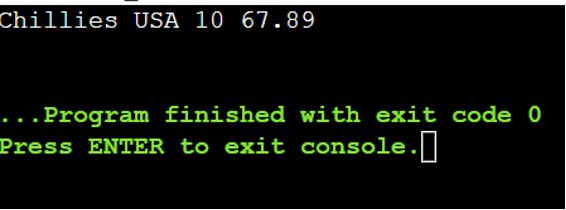
Line # 21 – Line # 30:

Example 2: Multiple Conditions
Let’s filter the records based on the location and quantity attributes. The quantity should be greater than 50 and less than 300. The location should be “USA”.
The query is “from i in country_prices
where i.quantity > 50
where i.quantity < 300
where i.location == “USA”
select i”
var data = from i in country_prices
where i.quantity > 50
where i.quantity < 300
where i.location == "USA"
select i;
foreach(var i in data)
{
Console.WriteLine(i.item + " " +i.location + " "+i.quantity + " "+ i.cost);
}
Output:
There are two records that matched the previous conditions.
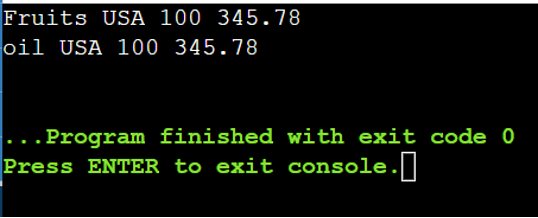
Line # 21 – Line # 32:

Example 3: And (&&) Operator
We can specify the “and (&&)” operator to specify multiple conditions at a time. If all the conditions are true, the records that satisfy all the conditions are returned by the query.
In this example, we select the records if the quantity is greater than 20 and the cost is 67.89.
The query is “from i in country_prices
where i.quantity < 20 && i.cost == 67.89
select i”
where i.quantity < 20 && i.cost == 67.89
select i;
foreach(var i in data)
{
Console.WriteLine(i.item + " " +i.location + " "+i.quantity + " "+ i.cost);
}
Output:
There is only one record with the quantity that is less than 20 and a cost of 67.89
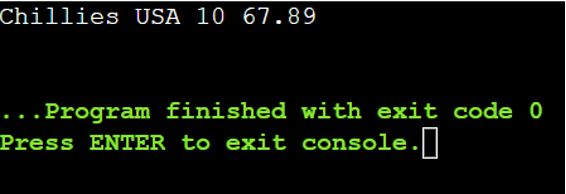
Line # 21 – Line # 29:

Example 4: Or (||) Operator
The “or (||)” operator is also used to specify multiple conditions at a time. If at least one condition is true, the records that satisfy that condition are returned.
In this example, we select the records if the quantity is greater than 300 or the location is “Tokyo”.
The query is “from i in country_prices
where i.quantity > 300 || i.location == “Tokyo”
select i”
where i.quantity > 300 || i.location == "Tokyo"
select i;
foreach(var i in data)
{
Console.WriteLine(i.item + " " +i.location + " "+i.quantity + " "+ i.cost);
}
Output:
There is only one record with a quantity that is greater than 300 (the first condition is matched).

Line # 21 – Line # 29:

3. Order By
If you want to arrange the records that are returned by the LINQ query in ascending or descending order based on values in any of the attributes, you can use the “order by” operator in the query. You need to specify this operator before the “select” operator.
Syntax:
Let’s see how to use the “order by” operator inside the LINQ query.
Ascending Order:
order by iterator.attribute ascending
select iterator;
Descending Order:
order by iterator.attribute descending
select iterator;
Example 1: Ascending Order
Select all the attributes from the data source (list) and return them in ascending order based on the values in the quantity attribute.
The query is “from i in country_prices
orderby i.quantity ascending
select i”
orderby i.quantity ascending
select i;
foreach(var i in data)
{
Console.WriteLine(i.item + " " +i.location + " "+i.quantity + " "+ i.cost);
}
Output:
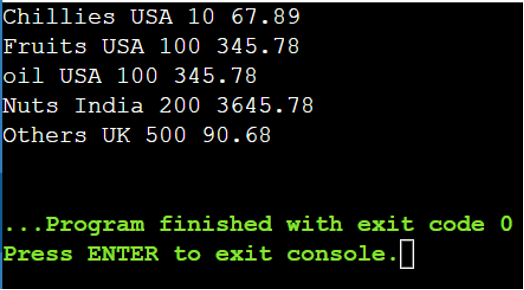
Line # 21 – Line # 29:

Example 2: Descending Order
Select all the attributes from the data source (list) and return them in descending order based on the values in the cost attribute.
The query is “from i in country_prices
orderby i.cost descending
select i”
orderby i.cost descending
select i;
foreach(var i in data)
{
Console.WriteLine(i.item + " " +i.location + " "+i.quantity + " "+ i.cost);
}
Output:
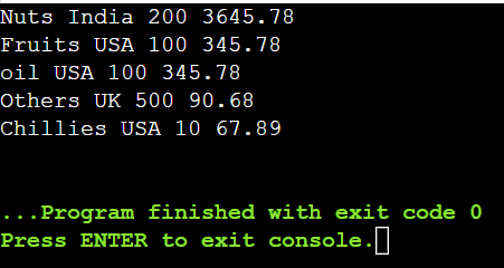
Line # 21 – Line # 29:

4. Limit
Limit in SQL limits the records that are returned by the query. It returns the top records that are returned by the query. In LINQ, we can achieve this by utilizing the Skip() with the Take() operator. Take() gets the specified number of records. Skip() is used to specify the starting record number. In this way, we can achieve the “limit” functionality in LINQ.
Syntax:
select iterator).Skip(n).Take(n);
- Skip() is used to skip the records and return the remaining records. It takes an integer which specifies the number of elements to be skipped. In our case, it is 0.
- Take() is used to take “n” number of records from the first record.
Example:
Select the first three records out of five records that are returned by the query.
The query is “(from i in country_prices
select i).Skip(0).Take(3)”
select i).Skip(0).Take(3);
foreach(var i in data)
{
Console.WriteLine(i.item + " " +i.location + " "+i.quantity + " "+ i.cost);
}
}
Output:
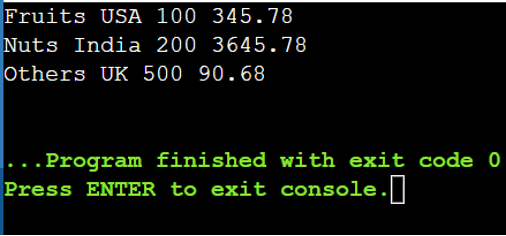
Line # 21 – Line # 28:

Conclusion
We learned how to write the queries in C# LINQ which is similar to SQL. As part of this tutorial, we discussed how to use the “select” operator to select the records from the data source. To filter the records that are returned by the query, we used the “where” operator by specifying the conditions. Then, we learned how to sort the records that are returned by the query with the “order by” operator. Finally, to limit the records, we utilized the Skip() and Take() operators.
Source: linuxhint.com
